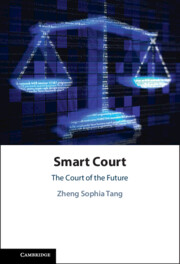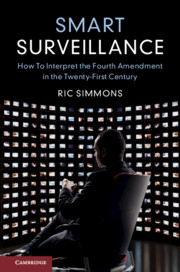Refine search
Actions for selected content:
2483 results for smart
9 - Smart devices, smart staff
- from Part 2 - Challenges and strategies involved in embracing mobile innovation for libraries
-
-
- Book:
- M-Libraries 5
- Published by:
- Facet
- Published online:
- 08 June 2018
- Print publication:
- 10 June 2015, pp 81-86
-
- Chapter
- Export citation
Smart designing of smart systems
-
- Article
-
- You have access
- HTML
- Export citation
Connectors of smart design and smart systems
-
- Article
-
- You have access
- Open access
- HTML
- Export citation
5 - Smart City and Smart Life
- from Part II - Use Cases and Target KPIs
-
- Book:
- 6G: The Next Horizon
- Published online:
- 30 April 2021
- Print publication:
- 06 May 2021, pp 68-74
-
- Chapter
- Export citation
Smart, Very Smart, and Intelligent Materials
-
- Journal:
- MRS Bulletin / Volume 18 / Issue 4 / April 1993
- Published online by Cambridge University Press:
- 29 November 2013, pp. 24-26
- Print publication:
- April 1993
-
- Article
- Export citation
22 - Smart Cities Value Their Smart Citizens
-
-
- Book:
- Urban Europe
- Published by:
- Amsterdam University Press
- Published online:
- 05 February 2021
- Print publication:
- 30 November 2016, pp 181-186
-
- Chapter
- Export citation
3 - Smart Regulation
- from Part I - Digital Transformation of Finance and Regulation
-
- Book:
- FinTech
- Published online:
- 09 November 2023
- Print publication:
- 23 November 2023, pp 27-42
-
- Chapter
- Export citation
27 - Smart Grids
- from Part VIII - Environmental Challenges and the Future of Electricity Markets
-
- Book:
- Economics of Electricity
- Published online:
- 30 May 2019
- Print publication:
- 30 May 2019, pp 326-335
-
- Chapter
- Export citation
Does every smart boy have a smart sister?
-
- Journal:
- Behavioral and Brain Sciences / Volume 13 / Issue 1 / March 1990
- Published online by Cambridge University Press:
- 19 May 2011, p. 192
-
- Article
- Export citation
7 - Smart Contracts
- from Part II - Contract Law and Smart Contracts
-
-
- Book:
- The Cambridge Handbook of Smart Contracts, Blockchain Technology and Digital Platforms
- Published online:
- 25 October 2019
- Print publication:
- 10 October 2019, pp 118-140
-
- Chapter
- Export citation
‘Smart’ grommets
-
- Journal:
- The Journal of Laryngology & Otology / Volume 133 / Issue 2 / February 2019
- Published online by Cambridge University Press:
- 14 January 2019, pp. 155-156
- Print publication:
- February 2019
-
- Article
- Export citation
13 - Smart Buildings
- from Part III - Smart Grid Data Management and Applications
-
- Book:
- Smart Grid Technology
- Published online:
- 20 October 2018
- Print publication:
- 28 March 2018, pp 207-224
-
- Chapter
- Export citation
34 - Smart Tools
-
- Book:
- The Quest for Artificial Intelligence
- Published online:
- 05 August 2013
- Print publication:
- 30 October 2009, pp 507-514
-
- Chapter
- Export citation

Media Smart
- Lessons, Tips and Strategies for Librarians, Classroom Instructors and Other Information Professionals
-
- Published by:
- Facet
- Published online:
- 26 May 2022
- Print publication:
- 31 March 2022
Part V - Smart Contracts
-
- Book:
- The Cambridge Handbook of Smart Contracts, Blockchain Technology and Digital Platforms
- Published online:
- 25 October 2019
- Print publication:
- 10 October 2019, pp 269-310
-
- Chapter
- Export citation
19 - The smart grid
-
- Book:
- Being Mobile
- Published online:
- 05 October 2013
- Print publication:
- 30 September 2010, pp 180-183
-
- Chapter
- Export citation

Smart Court
- The Court of the Future
-
- Published online:
- 05 September 2025
- Print publication:
- 25 September 2025
3 - Smart Borders
-
- Book:
- Smart Borders, Digital Identity and Big Data
- Published by:
- Bristol University Press
- Published online:
- 27 March 2024
- Print publication:
- 11 January 2024, pp 68-86
-
- Chapter
- Export citation

Smart Surveillance
- How to Interpret the Fourth Amendment in the Twenty-First Century
-
- Published online:
- 02 August 2019
- Print publication:
- 22 August 2019
6 - Smart Motorways
-
- Book:
- Extinction Equilibrium
- Published by:
- Bristol University Press
- Published online:
- 16 April 2025
- Print publication:
- 21 October 2024, pp 101-112
-
- Chapter
- Export citation
